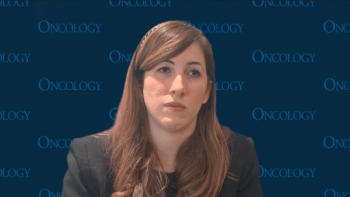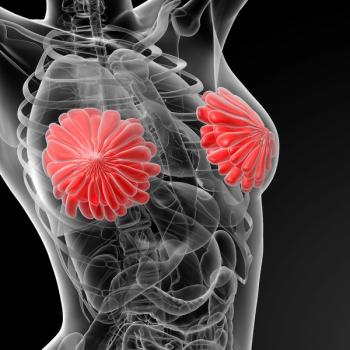
Oncology NEWS International
- Oncology NEWS International Vol 17 No 3
- Volume 17
- Issue 3
Host HSC depletion improves donor engraftment in mice
A novel approach aimed at depleting host hematopoietic stem cells (HSCs) by an immunologic method may facilitate subsequent donor stem cell transplantation without the need for traditional myeloablative conditioning regimens. Agnieszka Czechowicz, a medical student conducting research in the laboratory of Irving Weissman, MD, at Stanford, discussed results of her research using murine transplantation models that could reduce the toxicity associated with traditional approaches and expand the potential applications for HSC transplantation (ASH 2007, abstract LB2).
ATLANTA-A novel approach aimed at depleting host hematopoietic stem cells (HSCs) by an immunologic method may facilitate subsequent donor stem cell transplantation without the need for traditional myeloablative conditioning regimens. Agnieszka Czechowicz, a medical student conducting research in the laboratory of Irving Weissman, MD, at Stanford, discussed results of her research using murine transplantation models that could reduce the toxicity associated with traditional approaches and expand the potential applications for HSC transplantation (ASH 2007, abstract LB2).
Previous murine research has shown that transplantation of donor HSCs typically results in a very low rate of engraftment, suggesting that additional factors other than the immune system limit engraftment. Ms. Czechowicz and her colleagues proposed that HSC engraftment could be restricted by lack of available “space” within stem cell niches.
“We believe that when we transplant HSCs, we saturate the available hematopoietic stem cell niches, and after a certain dose, we are not able to get any additional engraftment from the transplanted cells,” she said. Increasing the number of available niches by first eliminating host HSCs that occupy them may increase the efficiency of donor HSC engraftment.
Eliminating host bone marrow to make space for donor HSCs in specialized bone marrow niches has been proposed by other researchers (Beguin Y et al: Acta Clin Belg 58:37-45, 2003), but generally assumes that a myeloablative conditioning regimen or graft-versus-host reaction is first required. Ms. Czechowicz and her colleagues used a novel immunologic method to deplete host HSCs prior to transplantation. ACK2 (an antibody that blocks c-kit function) inhibits stem cell factor–dependent proliferation of HSCs and leads to apoptosis.
Injection of immunodeficient mice with ACK2 results in transient elimination of 99% of endogenous HSCs. Dr. Czechowicz found that when such ACK2-treated mice were transplanted with donor HSCs, high-level, dose-dependent increases in engraftment (as measured by donor chimerism) were seen.
Transplantation of 35,000 HSCs into conditioned mice led to donor chimerism rates greater than 90% (a 180-fold increase over control animals), suggesting a high degree of engraftment.
“Importantly,” she said, “we were able to achieve such high levels of chimerism without any toxic side effects.”
Since these levels of chimerism would be sufficient to cure most nonmalignant hematologic diseases, this approach could allow transplantation for treatment of disorders such as sickle cell disease and aplastic anemia, autoimmune diseases like type 1 diabetes and multiple sclerosis, and induction of tolerance in organ transplantation.
A humanized form of the ACK2 antibody must first be developed for clinical application of this method, to avoid potential anti-murine immune responses.
“This is the first step along a long road to make hematopoietic stem cell transplants for a variety of diseases of the blood-forming system an easy and safe outpatient procedure,” Dr. Weissman said in an interview.
Articles in this issue
almost 18 years ago
Recentin headed to phase III in first-line colon caalmost 18 years ago
Topo 2 alpha test FDA approvedalmost 18 years ago
RFA provides sustained pain relief in osteoid osteomaalmost 18 years ago
Renal ca surgery often determined by doctors’ practice stylealmost 18 years ago
Partial nephrectomy underutilized for small renal tumorsalmost 18 years ago
Most older men with early-stage cancer can avoid treatmentalmost 18 years ago
SERM reduces ADT side effectsalmost 18 years ago
New serum biomarker appears to detect colon canceralmost 18 years ago
Hypofractionated IMRT does not increase sexual side effectsalmost 18 years ago
Surface mapping aligns patients for external beam PBINewsletter
Stay up to date on recent advances in the multidisciplinary approach to cancer.















































































